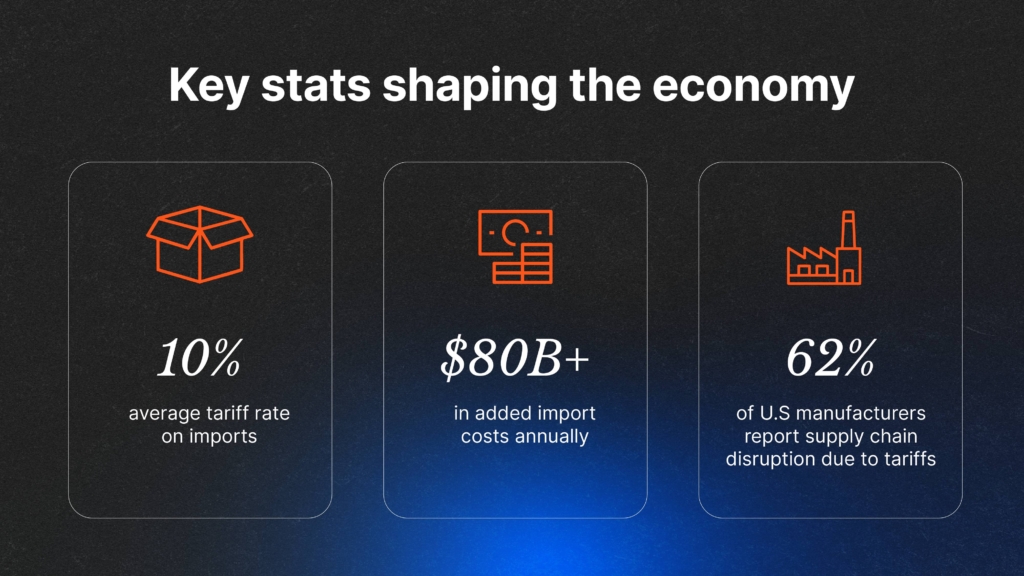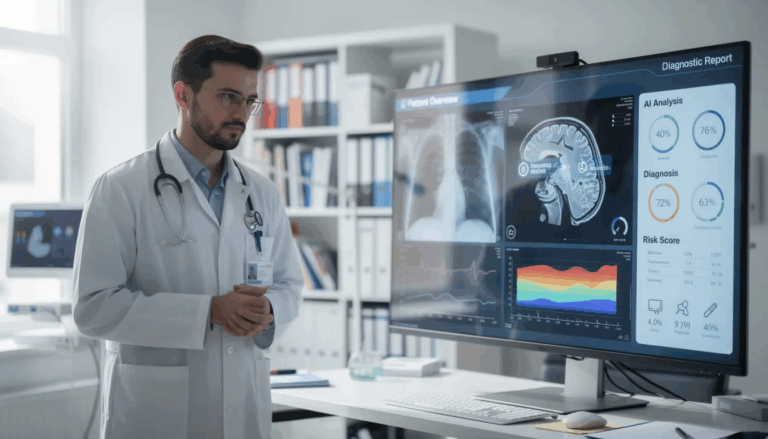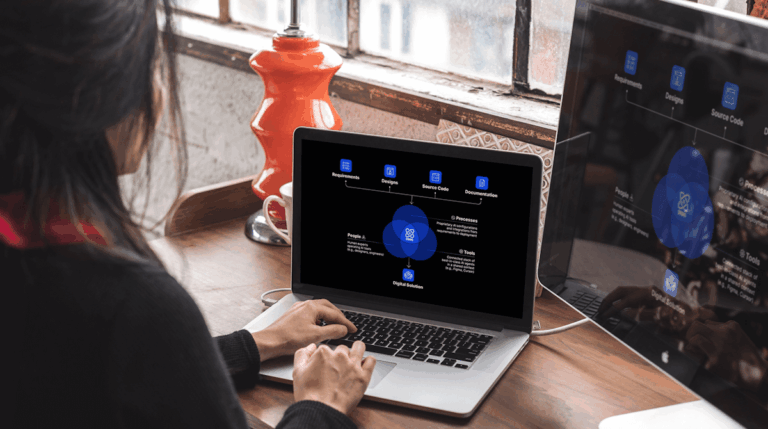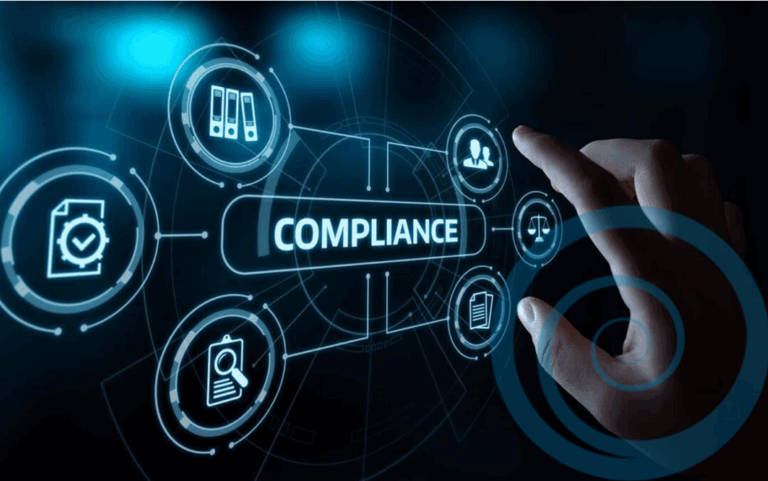Understanding U.S. Tariffs
As the global economy undergoes changes and new trade tensions emerge, U.S. tariffs in 2025 are reshaping the way American businesses operate. These tariffs impact everything from supply chains to pricing strategies, with economists cautioning that persistent tariffs could heighten the risk of a global recession. In this scenario, U.S. companies must find ways to adapt. These taxes on imported goods aim to boost domestic production and reduce reliance on foreign imports, but their effects extend well beyond trade policy.
This article explores how tariffs are impacting U.S. companies, particularly in sectors such as manufacturing, healthcare, and financial services, and examines how businesses are adapting. From rising costs to workforce disruptions, the economic impact of tariffs is considerable. However, amid these challenges, we also highlight the growing opportunities for efficiency: how technologies like AI, automation, and application modernization are enabling businesses to respond with resilience.
The Ripple Effect of Tariffs Across U.S. Industries
The imposition of tariffs has created significant ripples throughout various U.S. economic sectors, with manufacturing, healthcare, and financial services being particularly affected. The surge in import prices is squeezing profit margins, compelling businesses to make tough choices. Many companies are postponing investments and strategic decisions due to the uncertainty tariffs have introduced, prompting a reevaluation of their operational strategies and market dynamics.
In the face of tariff-related challenges, businesses are increasingly turning to automation and AI as essential tools to maintain competitiveness. These technologies help offset rising operational costs and improve production capabilities, transforming industries.
Let’s delve into how automation and AI are being utilized across different sectors to navigate the complexities of the auto tariffs landscape.
Manufacturing’s Response: Reshoring and Robotics
The manufacturing industry has been notably impacted by tariffs, prompting many businesses to consider reshoring—bringing production back to the U.S. to offset rising costs. This move is fueled by increased production expenses and the necessity to reassess supply chains, making domestic manufacturing more attractive despite higher labor costs.
With a persistent labor shortage, manufacturers are increasingly adopting automation to boost efficiency and cut costs. Around 50% of surveyed companies report implementing robotics and automated systems to handle tasks previously managed by workers, driven by the need to reduce expenses and remain competitive.
Automation technologies have become a fundamental part of the manufacturing sector, aiding companies in lowering production costs and enhancing efficiency amid rising labor expenses. Cost reduction remains the primary driver for embracing automation, surpassing other factors like quality control.
The shift towards automation is more than just a trend; it’s a necessity. As tariffs elevate production costs, manufacturers are turning to advanced technologies to maintain their competitive edge and ensure sustainability in a challenging economic climate.
Healthcare Under Pressure — and Turning to AI
In the healthcare sector, US tariffs may lead to an increase in the prices of medical devices and supplies, driving up operational costs for providers. This anticipated rise directly results in higher expenses for patients, with healthcare providers expecting a 15% increase in operational costs due to tariff-related expenses, which will ultimately lead to higher costs for consumers.
To tackle rising costs, the healthcare industry is turning to AI-driven solutions. These technologies not only help manage expenses but also enhance patient care efficiency, offering a dual benefit in an era of heightened economic pressures. These tools facilitate better resource allocation, enabling institutions to improve patient care while effectively managing costs.
AI enhances patient outcomes by streamlining administrative processes and optimizing diagnostic procedures. The integration of AI in healthcare underscores the sector’s adaptive strategies in response to the rising operational costs caused by tariffs.
Financial Services Brace for Economic Volatility
The financial services industry has not escaped the economic uncertainties brought on by tariffs. To brace for potential market volatility, financial institutions have increased their capital reserves, a common strategy when unpredictability is introduced to the macroeconomic environment.
In response to the economic uncertainties caused by tariffs, financial institutions are increasingly investing in AI to bolster their risk management strategies. By leveraging technology to assess risks and automate processes, these institutions aim to maintain stability and enhance resilience in a volatile economic climate.
Additionally, the sector is closely monitoring the impact of tariffs on global equity markets and currency fluctuations, which can significantly affect investment strategies and financial planning. Institutions are employing advanced data analytics to predict market trends and mitigate potential losses, ensuring they remain agile in the face of economic shifts.
Furthermore, financial services are exploring new opportunities for growth by diversifying their portfolios and expanding into emerging markets less affected by U.S. tariffs. This diversification strategy not only helps spread risk but also taps into new revenue streams, bolstering financial stability.
By adopting a proactive approach to navigating the complexities of the tariff landscape, financial institutions are positioning themselves to better manage uncertainties and capitalize on potential opportunities in the evolving global trade scenario.
Workforce Impacts and the Critical Need for Upskilling
The effects of tariffs extend beyond financial concerns, impacting organizational structures as well. Rising costs, uncertainty, and disruptions in supply chains are prompting organizations to rethink their operations. This is where efficient processes and smart technologies become crucial.
Rather than downsizing, forward-thinking companies are modernizing. By adopting automation, AI, and digital transformation, they are not only staying competitive but also building resilience. This moment calls for more than short-term solutions. It demands long-term thinking, smarter workflows, and the right technology to support your team. From process optimization to upskilling strategies, we are here to help you transform pressure into progress.
As businesses confront these challenges, upskilling the workforce has become more crucial than ever. Upskilling involves offering existing employees training and development opportunities to enhance their skills and adapt to new technologies. This approach not only helps companies maintain a competitive edge but also ensures employees remain relevant in a rapidly changing job market.
Moreover, investing in employee development fosters a culture of continuous learning and innovation, which is essential for long-term success. Companies that prioritize upskilling are better positioned to navigate the complexities of a tariff-affected economy, as they can quickly adapt to changing market demands and technological advancements.
At Dualboot, we partner with businesses to strategically equip them with the necessary tools for success. From AI services that provide advanced process optimization and predictive insights, to application modernization practice that enhances system performance all the way to our software product development services that creates custom solutions to tackle industry challenges. Every solution we provide is built on partnership. We work closely with our clients to develop smarter systems, empower teams, and help organizations not just react, but thrive, in a volatile global economy.
Ultimately, the urgent need for upskilling underscores the importance of strategic workforce planning and investment in human capital. As tariffs continue to reshape the economic landscape, businesses must focus on developing their workforce to ensure sustainability and success amidst ongoing challenges.
Long-term Implications of U.S. Tariffs
If the tariffs stick around, the long-term implications of U.S. tariffs extend beyond immediate economic impacts, influencing workforce dynamics, high-tech manufacturing, and overall economic growth.
Let’s explore how these tariffs are shaping the future landscape of the us economy.
Workforce Retraining
The shift towards automation driven by tariffs necessitates the development of retraining programs to equip workers for emerging roles in tech-oriented industries. As automation increases, targeted retraining programs will be crucial to prepare workers for new skills relevant to advanced technologies.
Programs focusing on reskilling workers will ensure that they can adapt to the changing landscape, supporting the transition towards higher-cost domestic production and mitigating the displacement of workers from more productive sectors.
High-Tech Manufacturing
The shift towards high-tech manufacturing in the U.S. could revitalize sectors such as aerospace and semiconductor production, promoting job creation in specialized fields. U.S. tariffs are influencing the decision of companies to bring manufacturing back to the United States, particularly in high-tech sectors.
The return of high-tech manufacturing has the potential to create new jobs and enhance the skill set of the workforce in the U.S., driving innovation and economic growth. This resurgence in business investment, manufacturing employment, and domestic production is a promising development for the future of the U.S. economy.
Economic Growth and Stability
The imposition of higher tariffs might initially hinder GDP growth, but could lead to more stable economic conditions in the long run through strengthened domestic industries and purchasing power and high tariffs.
Long-term tariff impacts could result in slowed real GDP growth as adjustments to new trade barriers take effect.
Conclusion: Tariffs and the Next Chapter for U.S. Businesses
In summary, U.S. tariffs have had profound effects on various sectors, prompting businesses to adopt new strategies and technologies to navigate the challenges. From reshoring in manufacturing to AI-driven solutions in healthcare and financial services, industries are evolving to maintain competitiveness.
While the latest wave of U.S. tariffs presents clear challenges — rising costs, supply chain tension, economic uncertainty — it’s also accelerating transformation across industries. From manufacturing to healthcare to financial services, we’re seeing organizations rethink the way they operate, invest in smarter technologies, and realign their workforce strategies.
But navigating this shift takes more than just new tools. It takes the right mindset — and the right partners.
We believe efficiency and resilience aren’t trade-offs. They go hand-in-hand when businesses are equipped with the right technology, systems, and teams. Whether you’re looking to modernize core platforms, introduce AI into your workflows, expand your team’s capabilities, or build new digital products — we’re here to help you turn complexity into opportunity.
President Trump’s tariff measures were designed to enhance American manufacturing by implementing tariffs on imports, especially from nations like China. This strategy aimed to promote domestic production and safeguard U.S. employment and is debatably an opening gambit to renegotiate what the administration deems unfair legacy trade partnerships.
How have tariffs affected healthcare expenses?
Tariffs have led to increased costs for medical devices and supplies, resulting in higher operational expenses for healthcare providers. Consequently, this is anticipated to lead to elevated healthcare expenses for patients
Why are financial institutions adopting AI?
Financial institutions are adopting AI to enhance risk management and fortify their operations amidst economic uncertainties. It’s about maintaining resilience and making more informed decisions in a volatile market.
What effect do tariffs have on consumer prices?
Tariffs typically result in higher consumer prices, effectively serving as a tax hike for households, with forecasts indicating an average increase of approximately $1,280 per year by 2025.
How are tariffs altering global trade dynamics?
Tariffs are reshaping how companies handle their production and sourcing, leading to a reconfiguration of global supply chains and influencing international trade policies. This shift is prompting businesses to adapt and reassess their strategies to remain competitive.







